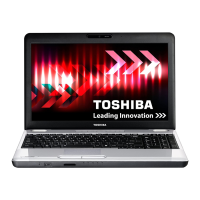
Do you have a question about the Toshiba Satellite L550 series and is the answer not in the manual?
| Wireless | Wi-Fi 802.11b/g/n |
|---|---|
| Processor | Intel Core 2 Duo |
| Display Size | 15.6 inches |
| Resolution | 1366 x 768 |
| Optical Drive | DVD SuperMulti |
| Chipset | Intel GM45 |
| LAN | 10/100 Ethernet |
| Webcam | Integrated Webcam |
| Battery | 6-cell lithium-ion |
| Graphics | Intel GMA 4500M |
| Operating System | Windows 7 Home Premium |
| Ports | 3 x USB 2.0, 1 x VGA, 1 x HDMI |
Warranty details for optical drives and associated software included with the computer.
Information on how the device complies with FCC rules for digital devices and interference.
Compliance statement for Canadian ICES-003 standards for digital apparatus.
Restrictions and requirements for using the 5.15 GHz to 5.25 GHz frequency range.
Information on the safety and health aspects of using Bluetooth wireless technology.
Compliance with R&TTE directive and CE mark information.
Information about the computer's ENERGY STAR compliance and energy efficiency features.
Instructions on how to connect the computer to an electrical outlet using the AC adapter.
Step-by-step guide on how to power on the computer for initial use.
Guidance on purchasing and adding extra memory modules to enhance system performance.
How to verify if the system recognizes newly installed memory modules.
Restores the computer to its original factory settings, deleting all partitions and data.
Allows specifying a custom size for the C: partition and restoring the drive.
Instructions on how to use the touchpad's scrolling features for navigation.
How to enable or disable the touchpad using function keys or settings.
Steps for attaching external monitors or projectors for a larger screen display.
Explains different methods like Shut Down, Hibernate, and Sleep for powering off the system.
How the computer saves its state to disk and powers down completely.
How the computer enters a low-power state, saving work to memory.
Information on using the computer's removable Lithium-Ion battery and its capabilities.
Details on battery life, charging, capacity, and care to prolong its lifespan.
Tips and methods to maximize battery life and extend operating time.
Guidance on selecting or creating power plans for energy saving or performance.
Quick access to computer functions and customization of settings via the TOSHIBA Assist utility.
Instructions for reinstalling system drivers and applications originally bundled with the computer.
Guidance on setting instant, supervisor, and user passwords for system protection.
Utility to help diagnose and test computer devices for potential problems.
Guidance on resolving common issues like programs freezing or stopping responding.
Troubleshooting steps for when the computer fails to power on or boot up.
Steps to check and change device configurations using Device Manager.
Solutions for common display issues like blank screens or incorrect picture quality.
Troubleshooting steps for issues related to accessing or performance of storage drives.
Instructions on backing up system configuration using Restore Points and other data backup methods.
Resources and steps for obtaining technical support from Toshiba.
Overview of system function modification keys like Mute, Sleep, and Brightness control.
Details on launching specific applications using Application Cards.
List of common acronyms used in the user's guide with their definitions.




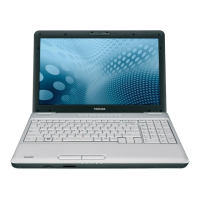
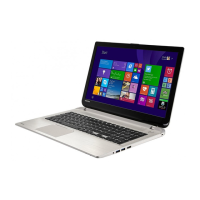
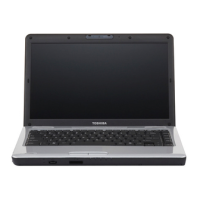
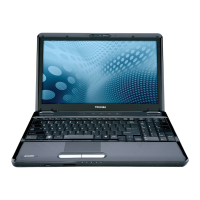
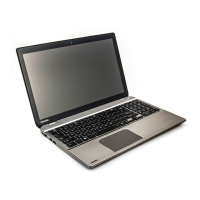
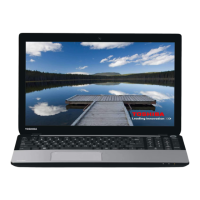
